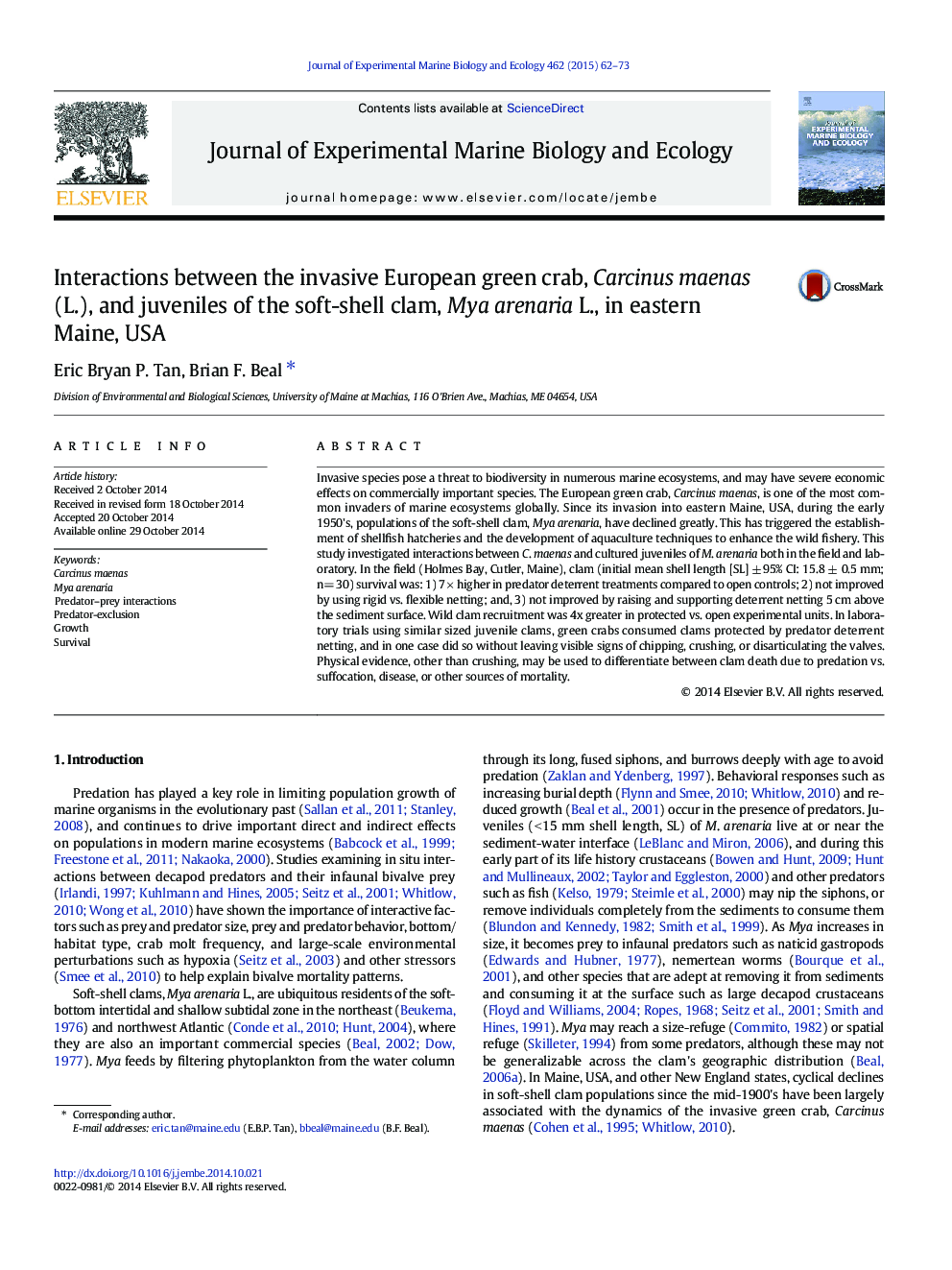| کد مقاله | کد نشریه | سال انتشار | مقاله انگلیسی | نسخه تمام متن |
|---|---|---|---|---|
| 4395440 | 1618413 | 2015 | 12 صفحه PDF | دانلود رایگان |

• Mya arenaria survival in field experiments is enhanced with predator-deterrent nets.
• The green crab, Carcinus maenas, was primarily responsible for clam mortality.
• Valves of Mya juveniles may remain undamaged and articulated after Carcinus attack.
• Previous work may have underestimated effects of crab predation on clam populations.
Invasive species pose a threat to biodiversity in numerous marine ecosystems, and may have severe economic effects on commercially important species. The European green crab, Carcinus maenas, is one of the most common invaders of marine ecosystems globally. Since its invasion into eastern Maine, USA, during the early 1950's, populations of the soft-shell clam, Mya arenaria, have declined greatly. This has triggered the establishment of shellfish hatcheries and the development of aquaculture techniques to enhance the wild fishery. This study investigated interactions between C. maenas and cultured juveniles of M. arenaria both in the field and laboratory. In the field (Holmes Bay, Cutler, Maine), clam (initial mean shell length [SL] ± 95% CI: 15.8 ± 0.5 mm; n= 30) survival was: 1) 7 × higher in predator deterrent treatments compared to open controls; 2) not improved by using rigid vs. flexible netting; and, 3) not improved by raising and supporting deterrent netting 5 cm above the sediment surface. Wild clam recruitment was 4x greater in protected vs. open experimental units. In laboratory trials using similar sized juvenile clams, green crabs consumed clams protected by predator deterrent netting, and in one case did so without leaving visible signs of chipping, crushing, or disarticulating the valves. Physical evidence, other than crushing, may be used to differentiate between clam death due to predation vs. suffocation, disease, or other sources of mortality.
Journal: Journal of Experimental Marine Biology and Ecology - Volume 462, January 2015, Pages 62–73